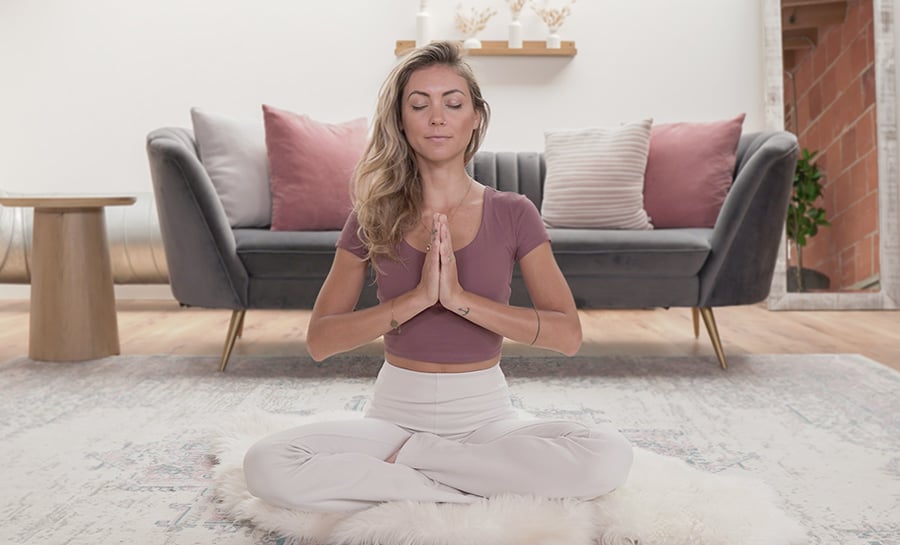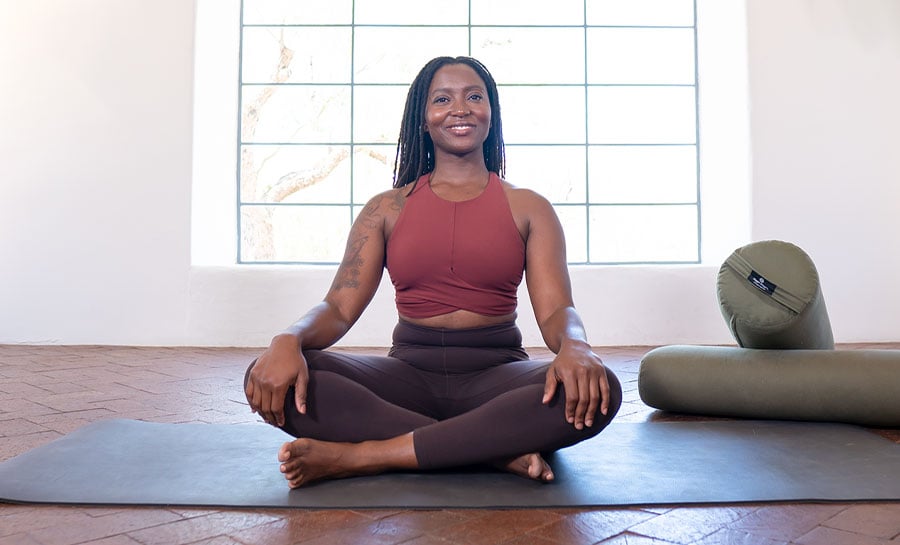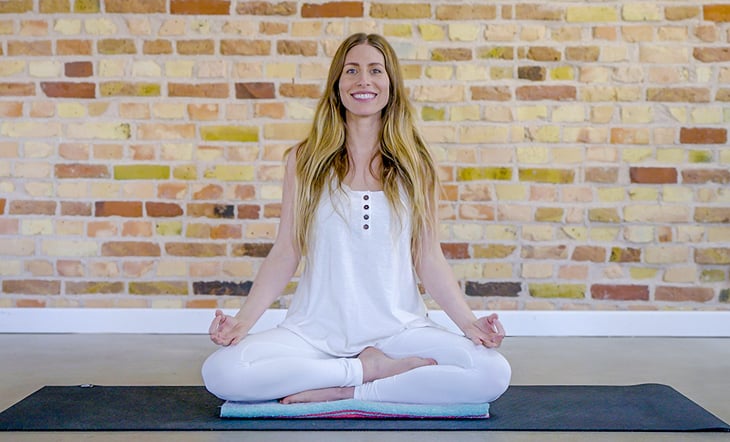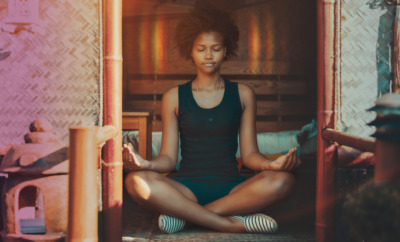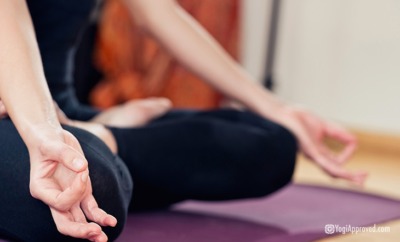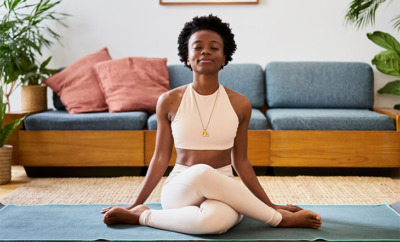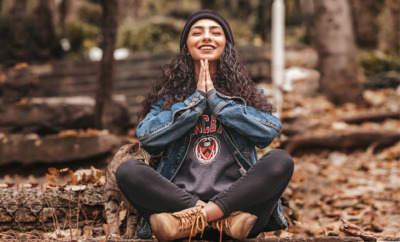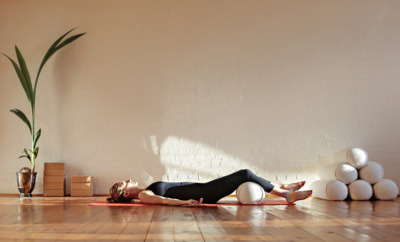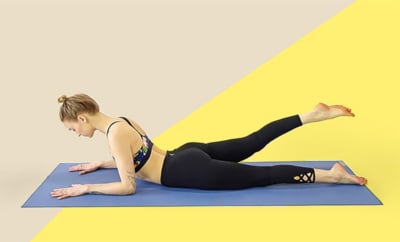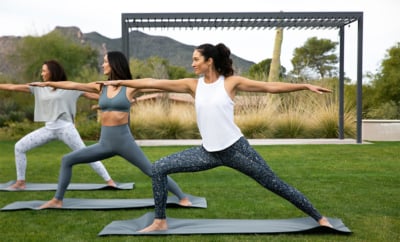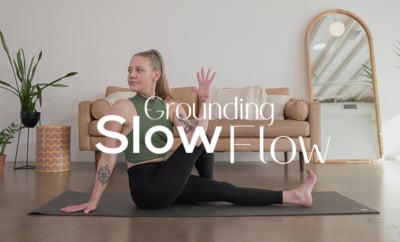Interested In Mindfulness Meditation? Here’s How to Get Started (From a Meditation Coach)
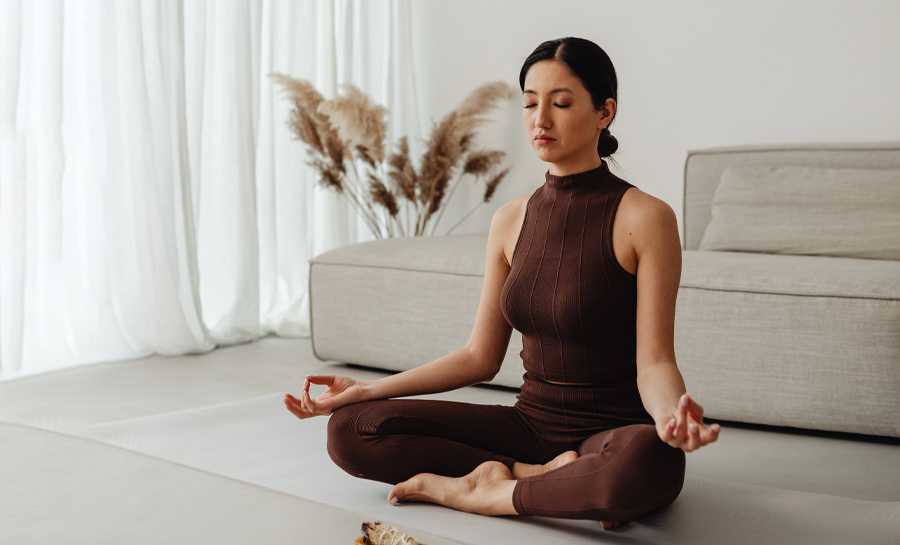
Mindfulness meditation is present moment awareness with non-attachment. It is the basic premise of meditation, but with the added practice of mindfulness, which helps keep the mind focused and calm.
Mindfulness meditation for beginners is a wonderful topic, because it means that you are interested in exploring or starting a meditation practice for yourself. This journey brings with it an immense and vast array of benefits for your mind. Your emotional and mental health will benefit, as will your ability to concentrate and stay focused.
Mindfulness meditation also activates your parasympathetic nervous system, so you can find a sense of calm and peace throughout your day regardless of what’s going on around you (sounds pretty nice, right?).
The Parasympathetic Nervous System: Here’s How It Affects Your Wellbeing
Scientifically studied benefits of mindfulness meditation include stress reduction, reduction of depression and anxiety, increased brain function, an immune system boost, and much more.
Yet the real reason to practice meditation is to discover your highest, truest self. You know – the part of you that lies underneath the confusion and endless thoughts . . . your pure limitless potential.
Why Is Mindfulness Meditation So Important?
Like anything else in holistic wellness, you likely know what to do. Want a healthier mind or less stress? Try therapy, take a walk in the woods, or meditate. There’s no lack in the information age of knowing what to do to make a positive change in our lives.
There’s also no limit of information on how to go about it. Self-help books, gyms, workshops, websites, yoga classes, and places to practice are unlimited. So, we can all agree we generally know what to do and how to do it (or we can at least figure it out easily).
What’s missing is a solid why. Why should we take time out of our busy day to meditate? Why not just sleep in and skip that morning session? Why not give into the thought I don’t have time to practice today?
There are tons of excuses we use to justify. “Maybe when the kids grow up, I’ll have more time to practice.” Or maybe, “If my job wasn’t so demanding, I’d have time to meditate.” Or the classic American badge of honor, “I’m just too busy.”
Having a compelling why is a crucial start to get – and stay – committed to a daily meditation practice.
Here Are 5 Motivating Reasons to Meditate Every Day:
1. Start the Day Grounded and Conscious
Starting the morning with meditation is a wonderful addition to your regular routine. It is just as important as brushing your teeth – and just as appreciated by everyone you encounter throughout the day.
A calm, settled, clear, and intentional mindset will help you have better interactions with others and yourself, and it will also help you combat being reactive or impulsive in difficult or emotionally-charged situations.
2. Form Positive Habits and Strengthen Willpower
Without a daily meditation practice, it is much more likely that you will fall back into old habits that do not serve you and aren’t in alignment with your purpose and authenticity. Unconscious, repetitive thoughts can drastically affect your mental health.
A regular meditation practice will reinforce your willpower and help you form positive and productive new habits so you can let go of what no longer serves you.
3. Establish Loving and Healthy Relationships
Ever get triggered by something your spouse, child or co-worker says? Can you remember the last time you reacted versus responded to a challenging situation?
Daily meditation gives you the ability to pause when feeling triggered. You’ll be able to tune into that tightness in your chest, gut and jaw. You’ll feel the heat in your face when anger arises. Through mindfulness meditation, you will cultivate the ability to pause, breathe and respond skillfully versus react unconsciously.
4. Cultivate More Joy and Eradicate Stress
We’ve heard of “Fight or Flight”. For thousands of years, we’ve survived using this tool. When presented with a life or death situation, your heart races, adrenaline and stress-hormones flood your body, and you either FIGHT or RUN. That same response is happening in modern times when you get a stressful email from your boss or experience road rage.
A daily meditation practice gives you the superpower of being able to better manage and recover from “flight or flight” response faster – taking you into the restorative “rest and digest” state more quickly and avoiding adrenal fatigue that many of us suffer from.
Interested in learning more about the Fight or Flight response and how to control it? Read This Is How Yoga Impacts Your Fight or Flight Response, According to Science
5. Live with Passion + Renew Your Vigor for Life
Most of us have had a glimpse into our true nature. Maybe it was the moment you saw your child being born or kissing your dying mother goodbye. Perhaps it was a deep stillness on a hike in nature or gazing into a loved one’s eyes.
You know there’s so much more to your life than busy-ness. You can just feel it. Your mindfulness meditation practice helps you transcend that unceasing mind to uncover your true peaceful nature. Meditating every day – and hopefully “taking it off the cushion” – helps you live in this unlimited potential 24/7.
The Italians say “If you can’t live longer, live deeper.” With your daily meditation practice, you can live your life fully in the present without missing a moment.
Here’s What You Need For a Daily Meditation Practice:
Quiet Location
Choose a quiet space where no one will interfere with your practice. Use a cushion and create a sacred space by placing a few meaningful objects on a table in front of you (i.e. picture of someone who inspires you, a statue, candle, crystals, herbs, etc).
Dedicated Time
You are encouraged to meditate whenever and as often as you can! Many find that first thing in the morning is the best time to meditate. After a trip to the restroom, get to your meditation cushion right away before your day gets going. You can also meditate in the middle of the day and before bed to quiet the mind and release built-up stress.
Set Duration
Many want to know a specific length of time to sit in meditation each day. The correct amount of time is 24/7 because you bring your mindfulness practice into every moment of your life. But for starters, 10-20 minutes is perfect. Set a timer and place it behind you so you aren’t tempted to look at it during your meditation session.
Mindfulness Meditation for Beginners: How to Find a Supportive Posture
- Sit on a cushion with your legs crossed and spine straight, shoulders stacked above hips. Use a chair if that’s more comfortable for you, but ensure that your spine is straight, don’t rest against the back of the chair, and keep your feet planted on the ground
- Rest your hands on your thighs or rest the back of one hand in the palm of the other and let your thumbs touch lightly
- Straighten your spine like a stack of golden coins
- Relax your shoulders down and away from your ears and allow the arms to relax down by your sides
- Gently tuck the chin and keep your lips slightly parted
- Gently close your eyes or keep them slightly open and gaze down about 3-4 feet in front of you
Use These 10 Tips to Get the Most Out of Your Meditation Practice
When you first start your daily meditation practice, everything might seem a bit intimidating. How long do you sit for? What was that noise? Did you remember to turn off your curling iron? All those buzzing thoughts will immediately jump into your mind as soon as you sit down for a moment of stillness.
With practice, you’ll find that your time on your meditation cushion gets a bit easier and feels a bit more natural. These 10 meditation tips will teach you how to cultivate your daily meditation practice.
1. Choose a practice and stick with it
There are endless types of meditation practices. Mindfulness meditation, which is present moment awareness with non-attachment, is the perfect foundational practice to start with.
2. Make your plan
You don’t have to dive right in with super long meditations. Research finds that just 20 minutes of meditation per day shows better results than inconsistently meditating for longer amounts of time. Commit to 30 days of 10 minute meditations to start building your new habit.
3. Commit to a friend
An accountability partner drastically increases regularity around your practice. Commit to sending a daily accountability text to a friend who also wants to learn how to meditate daily. You’ll be amazed how often that text will inspire you (or your friend) to hit the meditation cushion.
4. Meditate first thing in the morning
You’re busy. We get it. So, meditate before your day gets rolling. It’ll give your day a positivity boost, and you’ll be thankful that you started your day with some self-love.
5. Don’t expect it to go well
Don’t expect to sit in pure bliss and stillness your first few sessions. Instead, try and be cool with whatever thoughts, feelings, and sensations that arise. They will come and go. Don’t attach to them. This is called equanimity, and it’s a far more attainable goal than perfect stillness and bliss.
It’s important to remember when starting a mindfulness meditation practice that it’s a journey! Enjoy – and trust – the process.
6. Find a quiet spot to practice
It’s time to put Roger out in the yard (and perhaps your dog too!), so you can have some peace and quiet. Try to burn a candle or put a picture of someone who inspires you on a table. Make your practice sacred. This is your time – honor it by creating the space.
Hint: Don’t use your bed . . . you might fall asleep!
7. Assume the position
Find a firm cushion and sit your booty down. It’s important that your cushion is high enough so that, when sitting cross-legged, the bottom of your knees rest on the floor and your hips are elevated above your knees.
Keep your spine straight. Your chin is tucked. Gently rest your tongue on the roof of your mouth and allow your lips to be slightly parted. Rest your hands on your thighs, palms down. Allow your eyes to close gently, or keep a soft gaze 3-5 feet in front of you. Mindfully breathe in and out through your nose.
8. Set a timer
Turn your phone to silent and use it as a timer, but avoid the temptation to check your phone! Put your phone behind you where you won’t look at it.
There are also some great apps you can download while you learn how to meditate. Consider downloading the Welzen App or Insight Timer.
9. Don’t get discouraged
When you quiet down each day, you’ll likely be amazed by the craziness of your chattering monkey mind! Be kind to yourself. The point of meditation is not to stop thinking, but to learn how to observe thoughts without attachment.
When you do the practice below, you may have to come back to your breath 100 times in a session. That’s OK! Just like in the gym, when you learn how to meditate you’re exercising a new muscle. The muscle of mindfulness.
10. Do it for yourself and others
In the Buddhist tradition, this is called Loving Kindness and Dedicating the Merit. Know that, when you meditate, you are practicing self-healing. And through healing yourself, you’re healing this world.
What you’re doing matters. Your state of mind has an impact. At the end of your meditation, bow forward with your hands at your chest, and send out the wish that all beings find peace.
Start Meditating Now! Here’s How to Practice a Mindfulness Meditation for Beginners Anytime, Anywhere
Check out the steps below as a refresher, and then dive in!
- Sit straight and enjoy a few deep, full breaths (all breathing is done through nose)
- Let the breath return to normal and practice loving kindness for yourself and all beings by thinking May all beings be well, happy, peaceful and at ease
- Tune into the sensation of the breath in the body
- To help settle in, practice 4-3-5 breathing (breathe in for a count of 4. Hold for 3. Exhale for 5)
- Allow the breath to return to normal
- Do a body scan. While staying partially aware of your breath, bring your remaining awareness to your toes and slowly move up, tuning into each part of the body up through the crown of your head
- Return to simply being aware of the breath and feel it moving in and out of the body
- It’s normal to have thoughts that arise. Simply notice the thoughts, and note to yourself gently thinking, thinking or perhaps not now, not now and return to awareness of the breath
- Simply enjoy being with the breath and the body until your timer rings. Place your palms together in front of your chest, gently bow forward and think once more, May I and all beings be happy, peaceful and at ease
With This Mindfulness Meditation Guide, You Can Make It a Part of Your Daily Life
Forming a dedicated meditation practice is like giving your soul a hug every day. As a mindfulness meditation beginner, it is important to practice compassion towards yourself as you get into a groove. Every day won’t be easy and it definitely won’t be the same.
With these mindfulness meditation tips for beginners (and reminders for any experience level), forming a daily meditation habit becomes just a bit easier. I hope you enjoy your time on your cushion, and that you find everything you’re seeking!
Remember – no two meditation practices will be the same, and some days will be better than others. Trust the process and enjoy the journey down the path of mindfulness.
With time and commitment, you’ll come to discover that you crave sitting in meditation. You’ll start to notice small changes in your mentality and approach to yourself and others. Mindfulness meditation is the gateway to presence, compassion, peace, and grounding. Dig in.
Try One of These Guided Mindfulness Meditations


This Month's Letter
From the Editor
Monthly motivation and food for
thought from our founder.

